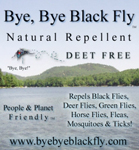by Fred Gralenski
Maine has two types of jumping mice, the Meadow Jumping mouse, Zapus hudsonius, and the Woodland Jumping mouse, Napaeozapus insignis. These are not unique to the area but are unique to the northern half of the Northern hemisphere, both here and in the old world. Jumping mice are little critters tipping the scales at an ounce for a fat one, and with fur coats of a handsome reddish honey color, a darker dorsal streak and pure white underneath. They have oversized hind legs like a kangaroo and a hind leg toe pattern that is pretty symmetrical, with the center 3 toes being the longest. Top this outfit off with a long tail of over 6 inches to stabilize them in their jumps, and you have a pretty unusual looking critter. The diet of our jumping mice is primarily seeds and a tiny but common underground fungus of the Endogone family. (Flying squirrels are also known to feed largely on this.) They will eat a lot of other stuff, depending on availability, like fruits and insects, but a study indicated their particular dislike for ladybugs and burying beetles. Jumping mice are pretty good swimmers, and the Woodland variety is also a good diver, a technique used to evade predators. The literature is full of contradictions on these critters, especially as to how far they can jump. I’ve seen Jumping mice bound away in their brushy wetland habitats, but they usually disappear after one jump, so it’s difficult to focus on them. Apparently the Woodland Jumping mouse is capable of hopping 8-10 feet in an open area, but the Meadow Jumping mouse only leaps 2-3 feet. The agreement in all of the literature seems to be that these guys are elusive, and seldom seen, although they may be pretty common in some areas. Normally, Jumping Mice just sneak around like regular mice, and only jump to escape predators.
My association with jumping mice in Pembroke started last summer. I often have problems with mice and voles in the garden. They cut down the lilies (not the common Day Lilies, but the expensive hybrids) and eat the tops of carrots, potatoes, beets, etc. I don’t mind a few thieves but if the number of these critters gets too irksome I may feel the population needs a little reduction. I don’t use poisons but I use the small mouse traps of the Victor type. These I put in little wooden boxes with mouse size entrances, so birds won’t get caught. I may or may not use bait, and the carcasses, if I’m successful, I give to the ever available bluejays. Anyway, late last summer I caught a Meadow Jumping mouse. I had never seen one here before, so after his demise I took in the traps and looked for signs of Jumping Mice. As the books say, the critters are elusive, and the books also say that they go into hibernation as early as September, so I stopped looking. Early in December, Linda got a glimpse of a mouse in the garage that she thought had a long tail. Now my garage is relatively mouseproof, but a door is often open so a critter can sneak in, and this time of year it’s usually a Deer mouse. I put out the typical trap: a five gallon plastic bucket with a dozen or so sunflower seeds in the bottom, and that was the start of an interesting experiment. I wanted to see the Jumping Mouse in action, and the best way to do that was to get him familiar with me, if indeed there was a Jumping mouse in my garage. As of this writing, and it has been over a month since I put out the bucket, I have caught one Deer mouse (see picture) as they can’t jump out of the bucket, but no Mystery Mouse. The little rascal gets into the bucket and most often eats the one or two dozen seeds in the bucket and leaves the shells, but sometimes he takes the seeds and he must hide them somewhere. He is mostly nocturnal, but will dine in the day if that suits him, and his timing is random. I have sat out in the cold garage with the camera at the ready, but so far I have not caught even a fleeting glimpse of him. He has taught me to clean the empty shells out of the bucket at least 2 or 3 times a day and put in a small handful of sunflower seeds afterwards, which I dutifully do. And the experts say you can’t teach an old dog new tricks. HAH!

Deer mouse that I caught in the bucket. Be careful in handling these as they can bite, although they seldom do.




